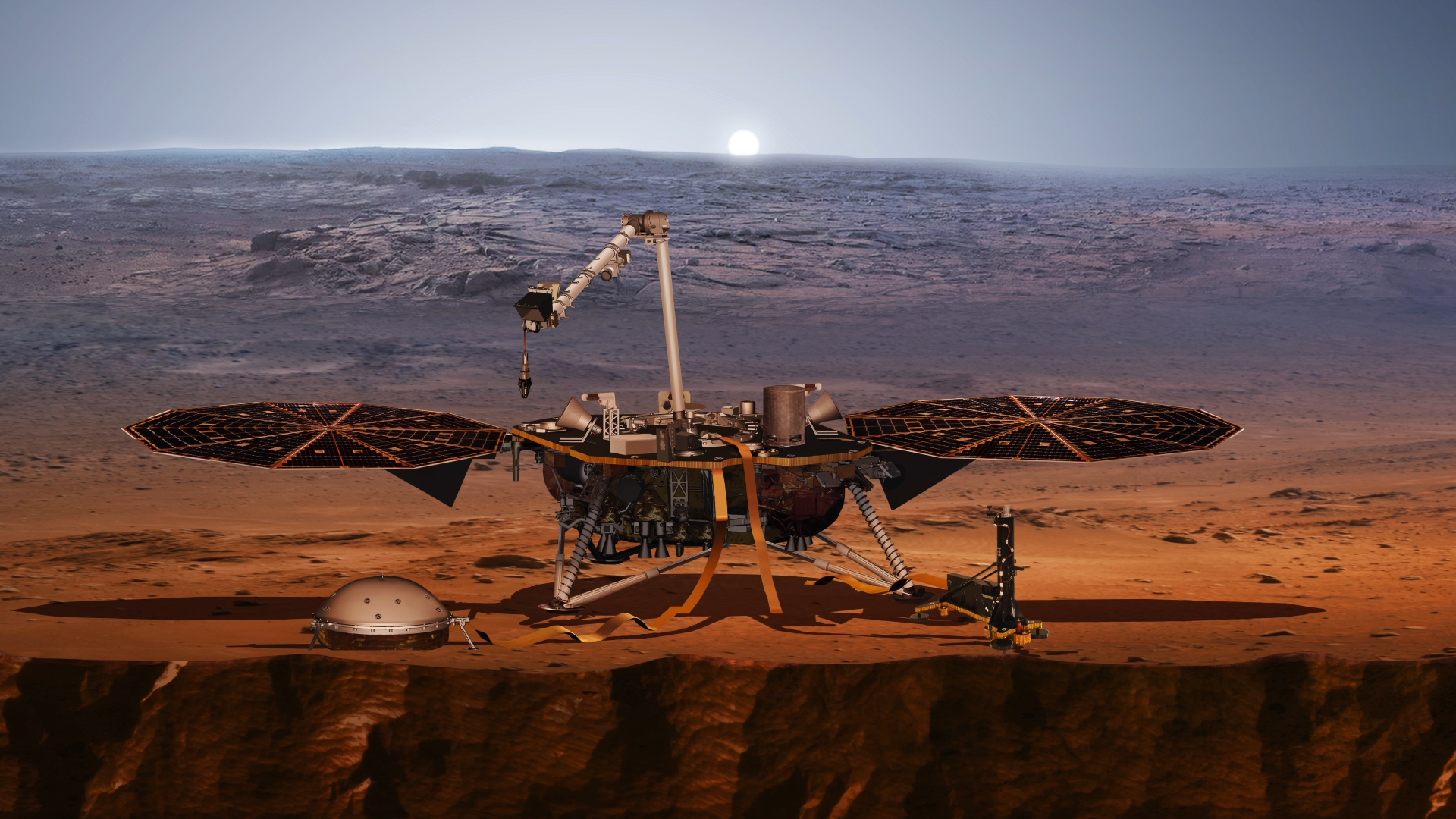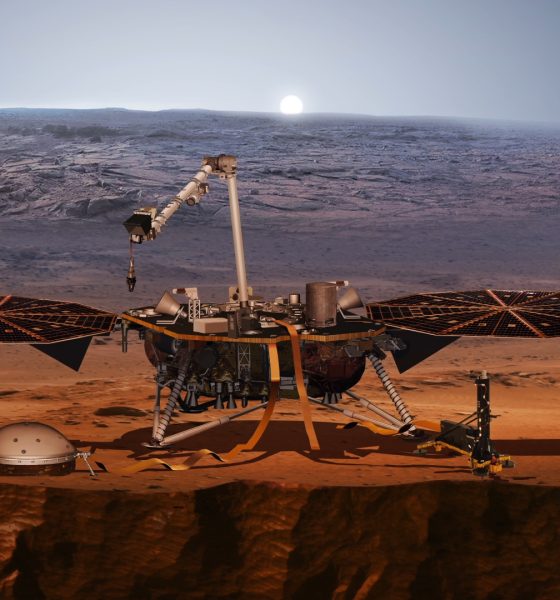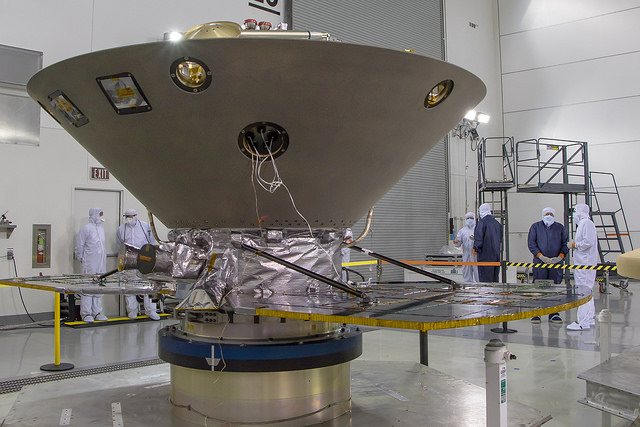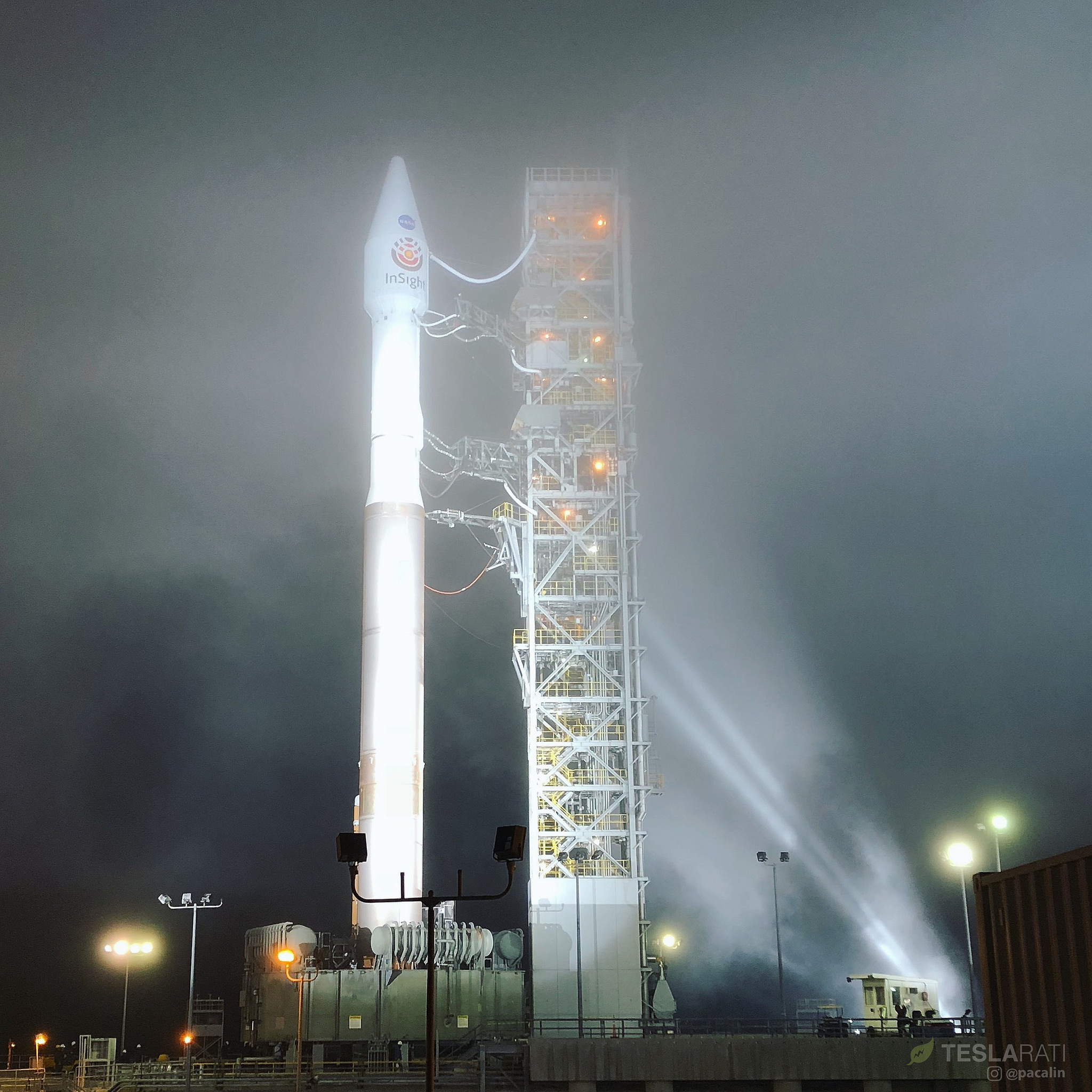

News
NASA to livestream first Mars landing in six years on November 26 with InSight lander
On Monday, November 26, 2018, a Mars lander will arrive on the surface of the red planet for the first time in six years, and NASA will broadcast the event live on their TV channel and website. The craft’s name is “InSight”, and it’s scheduled to complete its journey begun May 5, 2018 on an Atlas V rocket by setting down onto Martian regolith at approximately 3 pm EST. A video stream of Mission Control at the Jet Propulsion Laboratory in California will be available where viewers can listen to live landing commentary. InSight’s descent itself will not have a video component; however, photographs of the craft while parachuting and shortly after landing may be transmitted.
Truly enjoyed the experience of my first AtlasV launch, and all the excitement surrounding this incredible mission! Rather surprised my remote cams survived AND managed to capture *anything* in that totally rude fog. 🙂 Here are a couple shots. @NASAInSight @ulalaunch pic.twitter.com/XEH4zBLWpu
— Pauline Acalin (@w00ki33) May 5, 2018
InSight’s name is short for “Interior Exploration using Seismic Investigations, Geodesy and Heat Transport”, and as the name implies, its mission is to collect seismographic data from the surface of Mars in order to gather information about the planet’s core. The lander has six instruments on board that will propogate seismic waves through Mars’s interior after hammering a probe about 10-16 feet into the ground, a process which will take about 2-3 months to complete. The vibrations measured at the surface will then be measured and interpreted to reveal details about its layers and, by extension, the early formation of both it and Earth.
Unlike a rocket launch where delays are always possible, you can safely mark your calendar for this event. NASA can’t change this date even if they wanted to thanks to the physics involved in the lander’s interplanetary flight. If you’re interested in celebrating InSight’s Martian arrival in a community setting, watch parties open to the public are planned at scientific facilities and libraries around the world.

InSight in a clean room at Vandenberg AFB in California. | Credit: Pauline Acalin
Viewers of the live streamed landing will hear updates from scientists as they track InSight’s journey from a fiery entry speed of 12,300 mph to a 5 mph landing speed. Drag against the craft’s heat shield, parachutes, and retrorockets will slow its descent. The mission’s scientists hope to receive an image of the Martian surface shortly after, but they’ve cautioned that the initial photos will likely be cloudy due to dust kicked up from the event.
InSight will land in Mars’s Elysium Planitia (“the biggest parking lot on Mars”), an area near the planet’s equator. Its closest Earth-sent neighbor, the Curiosity rover, will be 240 miles away, and twin rovers Spirit and Opportunity will be located 1,600 and 5,200 miles away, respectively. Once on the surface, InSight’s first steps will be to unpack and deploy its solar panels to ensure power for the rest of its instruments.
The solar panels will provide about 600-700 watts on a clear Martian day, 200-300 during dustier conditions. For more perspective on this power source, NASA’s press release likened its maximum wattage to the requirements of a household blender (500 watts). The amount of energy converted just falls short of running a coffee machine (1000 watts), but plenty to “wake up” the lander after sleep, even if not a human.

As a bonus for space fans, InSight did not set out on its interplanetary mission alone. Twin demonstration mini satellites named “Mars Cube One” (MarCO) launched with the lander and traveled separately to the planet. Along with having completed successful radio, antennae, steering, and propulsion tests during their journey, MarCo will test a new kind of data relay from Mars orbit during InSight’s descent to the surface. InSight will not depend on successful transmissions to and from MarCo to land.
MarCO also marks the first deep space mission for a type of tiny satellite called “CubeSats”, a class characterized by a small form factor and miniaturized technologies that are often commercial, off-the-shelf components. MarCO fits this category and each satellite is about the size of a briefcase. The significantly lower development and launch costs of CubeSats compared to larger satellites have already opened space science to students and limited budget commercial initiatives. The success of MarCO in the deep space environment will now potentially open up interplanetary exploration beyond government agencies to encompass more civilian initiatives.
Watch NASA’s video below to learn more about the lander:

News
Tesla FSD fleet is nearing 7 billion total miles, including 2.5 billion city miles
As can be seen on Tesla’s official FSD webpage, vehicles equipped with the system have now navigated over 6.99 billion miles.

Tesla’s Full Self-Driving (Supervised) fleet is closing in on almost 7 billion total miles driven, as per data posted by the company on its official FSD webpage.
These figures hint at the massive scale of data fueling Tesla’s rapid FSD improvements, which have been quite notable as of late.
FSD mileage milestones
As can be seen on Tesla’s official FSD webpage, vehicles equipped with the system have now navigated over 6.99 billion miles. Tesla owner and avid FSD tester Whole Mars Catalog also shared a screenshot indicating that from the nearly 7 billion miles traveled by the FSD fleet, more than 2.5 billion miles were driven inside cities.
City miles are particularly valuable for complex urban scenarios like unprotected turns, pedestrian interactions, and traffic lights. This is also the difference-maker for FSD, as only complex solutions, such as Waymo’s self-driving taxis, operate similarly on inner-city streets. And even then, incidents such as the San Francisco blackouts have proven challenging for sensor-rich vehicles like Waymos.
Tesla’s data edge
Tesla has a number of advantages in the autonomous vehicle sector, one of which is the size of its fleet and the number of vehicles training FSD on real-world roads. Tesla’s nearly 7 billion FSD miles then allow the company to roll out updates that make its vehicles behave like they are being driven by experienced drivers, even if they are operating on their own.
So notable are Tesla’s improvements to FSD that NVIDIA Director of Robotics Jim Fan, after experiencing FSD v14, noted that the system is the first AI that passes what he described as a “Physical Turing Test.”
“Despite knowing exactly how robot learning works, I still find it magical watching the steering wheel turn by itself. First it feels surreal, next it becomes routine. Then, like the smartphone, taking it away actively hurts. This is how humanity gets rewired and glued to god-like technologies,” Fan wrote in a post on X.
News
Tesla starts showing how FSD will change lives in Europe
Local officials tested the system on narrow country roads and were impressed by FSD’s smooth, human-like driving, with some calling the service a game-changer for everyday life in areas that are far from urban centers.

Tesla has launched Europe’s first public shuttle service using Full Self-Driving (Supervised) in the rural Eifelkreis Bitburg-Prüm region of Germany, demonstrating how the technology can restore independence and mobility for people who struggle with limited transport options.
Local officials tested the system on narrow country roads and were impressed by FSD’s smooth, human-like driving, with some calling the service a game-changer for everyday life in areas that are far from urban centers.
Officials see real impact on rural residents
Arzfeld Mayor Johannes Kuhl and District Administrator Andreas Kruppert personally tested the Tesla shuttle service. This allowed them to see just how well FSD navigated winding lanes and rural roads confidently. Kruppert said, “Autonomous driving sounds like science fiction to many, but we simply see here that it works totally well in rural regions too.” Kuhl, for his part, also noted that FSD “feels like a very experienced driver.”
The pilot complements the area’s “Citizen Bus” program, which provides on-demand rides for elderly residents who can no longer drive themselves. Tesla Europe shared a video of a demonstration of the service, highlighting how FSD gives people their freedom back, even in places where public transport is not as prevalent.
What the Ministry for Economic Affairs and Transport says
Rhineland-Palatinate’s Minister Daniela Schmitt supported the project, praising the collaboration that made this “first of its kind in Europe” possible. As per the ministry, the rural rollout for the service shows FSD’s potential beyond major cities, and it delivers tangible benefits like grocery runs, doctor visits, and social connections for isolated residents.
“Reliable and flexible mobility is especially vital in rural areas. With the launch of a shuttle service using self-driving vehicles (FSD supervised) by Tesla in the Eifelkreis Bitburg-Prüm, an innovative pilot project is now getting underway that complements local community bus services. It is the first project of its kind in Europe.
“The result is a real gain for rural mobility: greater accessibility, more flexibility and tangible benefits for everyday life. A strong signal for innovation, cooperation and future-oriented mobility beyond urban centers,” the ministry wrote in a LinkedIn post.
News
Tesla China quietly posts Robotaxi-related job listing
Tesla China is currently seeking a Low Voltage Electrical Engineer to work on circuit board design for the company’s autonomous vehicles.

Tesla has posted a new job listing in Shanghai explicitly tied to its Robotaxi program, fueling speculation that the company is preparing to launch its dedicated autonomous ride-hailing service in China.
As noted in the listing, Tesla China is currently seeking a Low Voltage Electrical Engineer to work on circuit board design for the company’s autonomous vehicles.
Robotaxi-specific role
The listing, which was shared on social media platform X by industry watcher @tslaming, suggested that Tesla China is looking to fill the role urgently. The job listing itself specifically mentions that the person hired for the role will be working on the Low Voltage Hardware team, which would design the circuit boards that would serve as the nervous system of the Robotaxi.
Key tasks for the role, as indicated in the job listing, include collaboration with PCB layout, firmware, mechanical, program management, and validation teams, among other responsibilities. The role is based in Shanghai.
China Robotaxi launch
China represents a massive potential market for robotaxis, with its dense urban centers and supportive policies in select cities. Tesla has limited permission to roll out FSD in the country, though despite this, its vehicles have been hailed as among the best in the market when it comes to autonomous features. So far, at least, it appears that China supports Tesla’s FSD and Robotaxi rollout.
This was hinted at in November, when Tesla brought the Cybercab to the 8th China International Import Expo (CIIE) in Shanghai, marking the first time that the autonomous two-seater was brought to the Asia-Pacific region. The vehicle, despite not having a release date in China, received a significant amount of interest among the event’s attendees.








